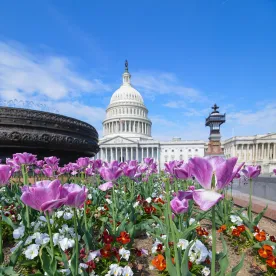Report on EEO-1 Data Confirms Flaws Yet Recommends Expansion. On July 28, 2022, the U.S. Equal Employment Opportunity Commission (EEOC) released a report by the National Academies of Sciences, Engineering, and Medicine titled Evaluation of Compensation Data Collected Through the EEO-1 Form. The 277-page report provides an analysis of the quality of EEO-1 Component 2 wage and hours-worked data that the EEOC collected for reporting years 2017 and 2018 while providing recommendations for potential data collections going forward. The report “concludes that the data as collected have value, but it recommends the value be strengthened by both short-term and longer-term improvements in respondent coverage, data collection protocols, measurement implementation, and conceptual coverage.”
According to EEOC Chair Charlotte Burrows, the report “confirms that federal pay data collection could be a unique and critically important resource for helping the Commission better identify and combat pay discrimination.” Yet the report confirms many of the flaws that the employer community warned about in 2016, including but not limited to the following:
-
“The 10 job categories used in the 2017–2018 Component 2 data collection are outdated and encompass a wide range of job responsibilities and pay rates.”
-
“Component 2 data collection does not include measures of legitimate causes of pay differences, such as educational attainment and tenure.”
-
“The Component 2 instrument does not provide a way to separate full-time, part-time, and part-year employees when comparing annual wages, which affects the calculation of hourly rates.”
-
“Without extensive cleaning, 2017–2018 Component 2 hours-worked data are unsuitable for calculating hourly wages.”
-
“The 2017–2018 Component 2 data are unsuitable for direct determinations of bias or reasonable cause for enforcement purposes”
Despite identifying these defects, the report makes several recommendations that would effectively have the EEOC double down on its wage data collection efforts by expanding Component 2 collection and analysis:
-
“If EEOC continues to collect pay data in bands, narrower pay bands should be adopted, and the number of bands should be expanded for top earners to better capture variation in pay.”
-
“EEOC’s current approach for aggregate pay and hours-worked data severely limits the utility of the data collected, unnecessarily increases employer burden, and complicates the collection of additional key information. Collecting data from employers at the level of individual workers may be less burdensome than the current approach and would markedly increase the utility of pay data.” (Italics added.)
-
“EEOC should develop, test, and (if found acceptable) implement modifications to the Component 2 instrument to collect individual-level employee pay data, which reflects employers’ current reporting practice to state and federal agencies.”
-
“EEOC should explore the measurement of pay gaps for additional groups protected under its authority or policy equities, including persons age 40 and older, persons with disabilities, and veterans.” (Italics added.)
-
“EEOC should work with employer groups and federal data collection agencies to explore ways to collect individual-level data, such as education, job experience, and tenure, which will support detailed pay-disparity analyses and employer self-assessments.”
Importantly, the report recommends that the EEOC “conduct a field test to investigate issues of burden, data availability, and questionnaire design,” should the agency embark on a wage-reporting scheme in the future. The current EEO-1 form, which does not contain Component 2 reporting requirements, is set to expire on June 30, 2023.
Biden Nominates Acting Wage and Hour Head for Permanent Position. On July 27, 2022, President Biden nominated Jessica Looman to be administrator of the U.S. Department of Labor’s Wage and Hour Division (WHD). Looman has served in the same position in an acting capacity since June 2021. Buzz readers may recall that President Biden’s first choice for the position, David Weil, had his nomination voted down by the U.S. Senate on March 30, 2022. Theoretically, Looman has the votes to be confirmed—something that the administration likely hopes will happen sooner rather than later, in the event that Republicans flip the Senate in 2023. Looman’s nomination is not expected to change the current trajectory of the WHD’s rulemaking agenda, which includes potential changes to the Fair Labor Standards Act (FLSA) independent contractor test and changes to the overtime regulations.
NLRB Partners With DOJ. One week after announcing a new memorandum of understanding with the Federal Trade Commission, on July 26, 2022 the National Labor Relations Board (NLRB) announced that it had signed a memorandum of understanding (MOU), with the U.S. Department of Justice’s (DOJ) Antitrust Division. According to the NLRB’s announcement of the agreement,
[t]he Agencies’ collaboration will focus on protecting workers who have been harmed or may be at risk of being harmed as a result of conduct designed to evade legal obligation and accountability (such as misclassifying employees or fissuring workplaces); interference with the rights of workers to obtain fair market compensation and collectively bargain (through labor market concentration/labor monopsony or other anticompetitive practices); and the imposition of restrictive agreements or workplace rules, such as noncompete, nonsolicitation, and nondisclosure provisions.
Of course, the Buzz will be watching to see how the MOU plays out in the real world.
House Panel Advances OSHA Heat Standard Bill. On July 27, 2022, the U.S. House Committee on Education and Labor voted to advance the Asunción Valdivia Heat Illness and Fatality Prevention Act of 2022 (H.R. 2193). The bill would require the Occupational Safety and Health Administration (OSHA) to finalize an interim heat stress standard within one year of enactment, despite the fact that Assistant Secretary of Labor for Occupational Safety and Health Doug Parker recently told the U.S. Congress that it would be “challenging” for the agency to develop a heat standard by 2024. The bill would also extend the statute of limitations for OSHA to issue a citation for a violation of the new standard from six months to four years. Finally, the bill would create a private right of action for heat-related whistleblower complaints and require the Occupational Safety and Health Review Commission to “grant substantial deference to any reasonable interpretation by the Secretary of [the] Act or any standard, regulation, or order pursuant to [the] Act.”
Bipartisan Group Introduces “Gig” Worker Bill. Late last week, Representatives Henry Cuellar (D-TX), Elise Stefanik (R-NY), and Michelle Steel (R-CA) introduced the Worker Flexibility and Choice Act (H.R. 8442). The bill is an attempt to address the “independent contractor or employee” debate by allowing workers to choose a third option that would provide them with both workplace flexibility as well as certain workplace protections. Pursuant to the legislation, a worker who entered into a “worker flexibility agreement” would enjoy certain workplace protections (such as leave under the Family and Medical Leave Act and protection from workplace harassment and discrimination in accordance with applicable laws) while retaining the ability to accept or reject offers for work opportunities from multiple entities.
The Greatest Generation Is So Money. This week, Congress sent to President Biden’s desk the “Greatest Generation Commemorative Coin Act” (H.R. 1057 / S. 1596). The legislation states that the “Secretary of the Treasury … shall mint and issue” not more than (1) 50,000 $5 gold coins, (2) 400,000 $1 silver coins, and (3) 750,000 half-dollar clad coins. Pursuant to the bill, the coins—which will be legal tender—will be “selected by the Secretary after consultation with the Commission of Fine Arts and the Friends of the National World War II Memorial.” If you are interested in acquiring any of the coins, they will cost you. The prices include the coins’ face values, the costs to manufacture the coins, and surcharges of $35 per coin for the $5 coin, $10 per coin for the $1 coin, and $5 per coin for the half-dollar coin. The surcharges all go to a worthy cause. According to the bill, “all surcharges received by the Secretary from the sale of coins issued under [the] Act shall be promptly paid by the Secretary to the Friends of the National World War II Memorial to support the National Park Service in maintaining and repairing the National World War II Memorial, and for educational and commemorative programs.” The coins will be issued for one year beginning on January 1, 2024.




 />i
/>i

